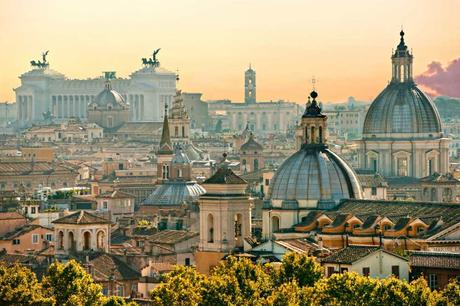
The Catholic Church and Benito Mussolini signed the Lateran Pacts in 1929. This marked the inauguration of the Vatican City’s status as the world’s smallest independent city-state. With a population of 1,000 citizens, the country has its own postal stamps, radio stations, and television channels. Despite its small size, its existence is one that has endured on for hundreds of years. The story of the Vatican is complex, prosperous yet sometimes troubled. It has witnessed the arrivals of many Popes and architectural changes in history. But where does the story of the Vatican’s illustrious and rich history truly begin?
St. Peter’s Basilica
In the 4th century AD, the Christian Emperor Constantine erects the first basilica on the assumed site of St. Peter’s grave. Construction finishes in the year 349 AD and the basilica stands proud for over a millennium before concerns of its decaying facade render the structure irreparable. In 1506, the present-day St. Peter’s Basilica is commissioned by Pope Julius II. The construction of the new Basilica lasts for over 100 years with many of the Renaissance era’s master painters and architects having a part in the creation of exquisite frescoes, divine domes, and statuesque sculptures. This was not a small task, and it is recounted that 10 architects worked on the church over a period of more than 200 years. Some legendary masters include the famed Italian architect Donato Bramante and sculptor Michelangelo who painted the Sistine Chapel.
Sistine Chapel
Named after the Emperor Sixtus IV, the Sistine Chapel is regarded as an iconic addition to the golden era of Renaissance art with paintings completed by the likes of Botticelli and Bartolomeo della Gatta to name a few. Michelangelo painted the ceiling in 1508, a well-known fact is that it took the artist over 4 years to complete due to the painstakingly minuscule details he added into his work. The first mass held in the Chapel was in the year 1483 and it is noted to be the Pope’s private chapel. Since 1492, it has held the important task of being the deciding place for 115 cardinals in electing the future Pope. Today the site is visited by approximately 5 million visitors each year. Although cameras are banned in this Chapel, it is a spiritual and memorable experience that is bound to leave visitors with long-lasting memories of the stunning fresco scenery in the Holiest of chapels.
Apostolic Palace
The official residence of the Pope, the Apostolic Palace overtook the position of the original Lateran Palace after its demise from fires that left it badly damaged. Beginning in 1589 during the reign of Emperor Sixtus IV, the palace spanned an area of over 162,000 square meters and houses over 1000 rooms. Much like the White House, the Apostolic Palace is not just used for residency. It also holds administrative offices and the Vatican Museums. Aside from this, there are luscious gardens, sparkling fish ponds and a library home to the largest collection of Christian books in the world.
Advertisements
